In 1850, the United States Congress passed the Oregon Donation Land Law which granted non-Indians the right to occupy lands in the Oregon territory regardless of the Indians who might be living there. The following year, non-Indian settlement began at what would become Pendleton, Oregon.
The Oregon Donation Land Law ignored American Indian land rights. Historian Alexandra Harmon, in her book Indians in the Making: Ethnic Relations and Indian Identities Around Puget Sound, notes:
“The statute disregarded a long-standing federal policy of obtaining consent from Indian occupants before issuing land titles in a new U.S. Territory.”
In his book The Bitter Waters of Medicine Creek: A Tragic Clash Between White and Native America, Richard Kluger reports:
“In promising settlers an opportunity to put down roots that would yield a bountiful future, Congress failed to specify that title to the land could not be certified until it was first formally vacated by the native who lived on or regularly made use of it.”
In 1855, the American government held a treaty council near present day Walla Walla, Washington, for the purpose of getting Indians out of the way of non-Indian settlement by establishing reservations. This would free up Indian land for non-Indian settlement and for a railroad. As a result of this treaty council, the Umatilla Indian Reservation was established for the Umatilla, Cayuse, and Walla Walla tribes. While the Americans promised the Indians that they would not have to more to the reservation until one year after the treaty was ratified by the U.S. Senate. Governor Isaac Stevens, who had negotiated the treaty, informed the newspapers that the Indian lands were available for immediate settlement.
The Heritage Station Museum in Pendleton, Oregon has two small displays of American Indian artifacts.
 Shown above are some examples of Plateau Indian baskets.
Shown above are some examples of Plateau Indian baskets.  Shown above are two larger gathering baskets.
Shown above are two larger gathering baskets. 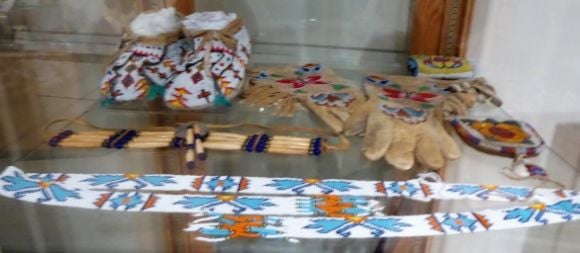 Shown above are some examples of beadwork.
Shown above are some examples of beadwork. 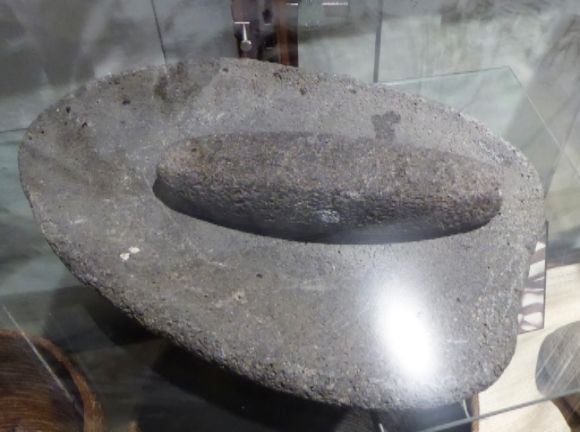 Shown above is a mano and metate which was used for grinding seeds to make flour.
Shown above is a mano and metate which was used for grinding seeds to make flour. 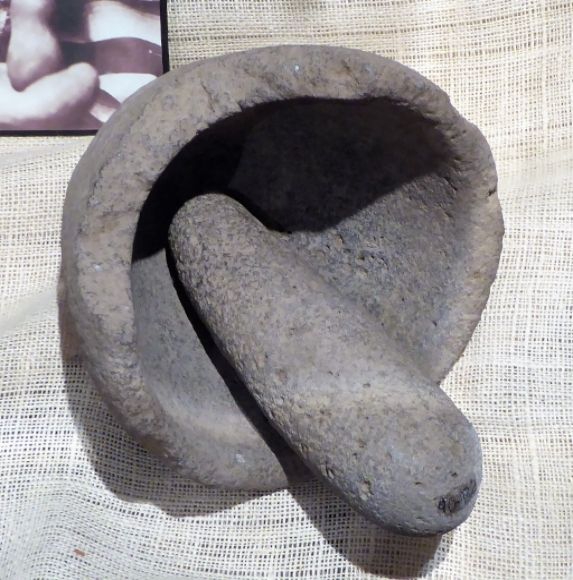 Shown above is a stone mortar and pestle.
Shown above is a stone mortar and pestle. 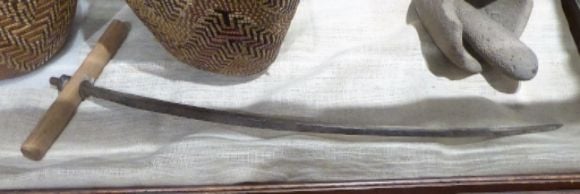 Shown above is a digging stick which was used in harvesting root plants such as camas.
Shown above is a digging stick which was used in harvesting root plants such as camas.
Plateau Basket Weaving
The Heritage Station Museum in Pendleton, Oregon has a small display of Plateau basket weaving. Basket weaving is an ancient craft and art form among the Indians of the Columbia Plateau. The late Carrie Katherine Abraham Sampson Baptiste, a Walla Walla tribal elder born in 1909, was a master weaver. According to the Museum display:
“She was a mover and shaker of cultural preservation. She avidly fulfilled longhouse duties around the traditional foods. She kept alive endangered knowledge and skills with generous teachings.”
In the early 1970s, Joey Lavadour became her apprentice, learning to weave both flat bags and round baskets. To perpetuate the ancient skills, Joey has conducted workshops at places such as Crow’s Shadow Institute. His work has been featured at the annual gatherings of the Northwest Native American Basketweavers Association.
According to the Museum display:
“It is a belief among Plateau cultures that when a person creates something, such as a basket or bag, part of that person stays with their creation. With this in mind, it can be said that every basket has a story or meaning.”
Shown below are some examples of his students’ work.
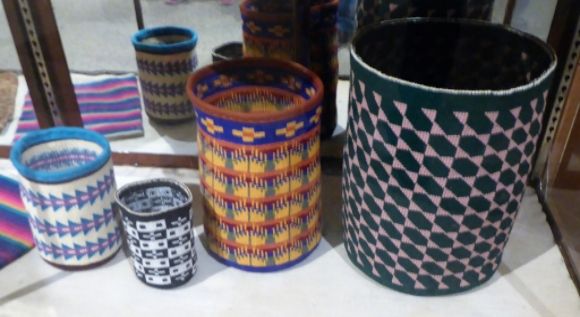 Shown above are some round baskets.
Shown above are some round baskets.  The two center items are basketry hats, typical of the Plateau area.
The two center items are basketry hats, typical of the Plateau area. 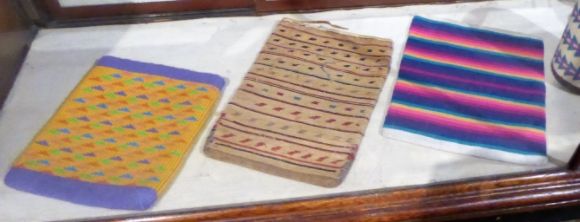 Shown above are flat bags.
Shown above are flat bags. 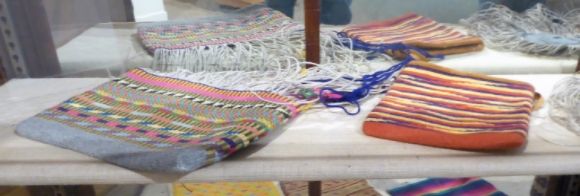 Shown above are more flat bags.
Shown above are more flat bags.
According to the Museum display:
“Geometric designs are some of the oldest forms of artwork and have been incorporated into Plateau weaving for generations. These designs can represent elements of the natural world such as water, mountain, and stars. They can also represent concepts such as the ‘whirling logs’ design which has several interpretations. Symmetry is an important trait visible in many of these designs as seen in the ‘quail on top’ or ‘hourglass’ designs.”
According to the Museum display:
“One way to view what is important to a group of people is to examine the images that appear in their artwork. Animals such as salmon, horses, deer, elk, turtles, and frogs are all represented in Joey’s weavings and can also be see in historic Plateau baskets and bags. The human form is another design that is commonly replicated in weaving and is usually a very abstract representation.”
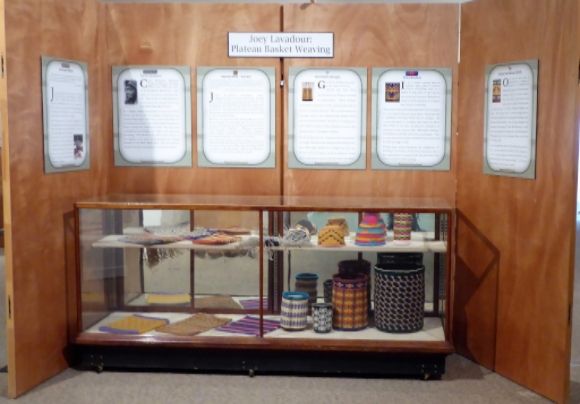
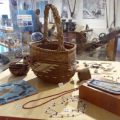
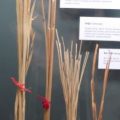

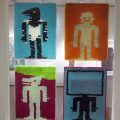
Leave a Reply